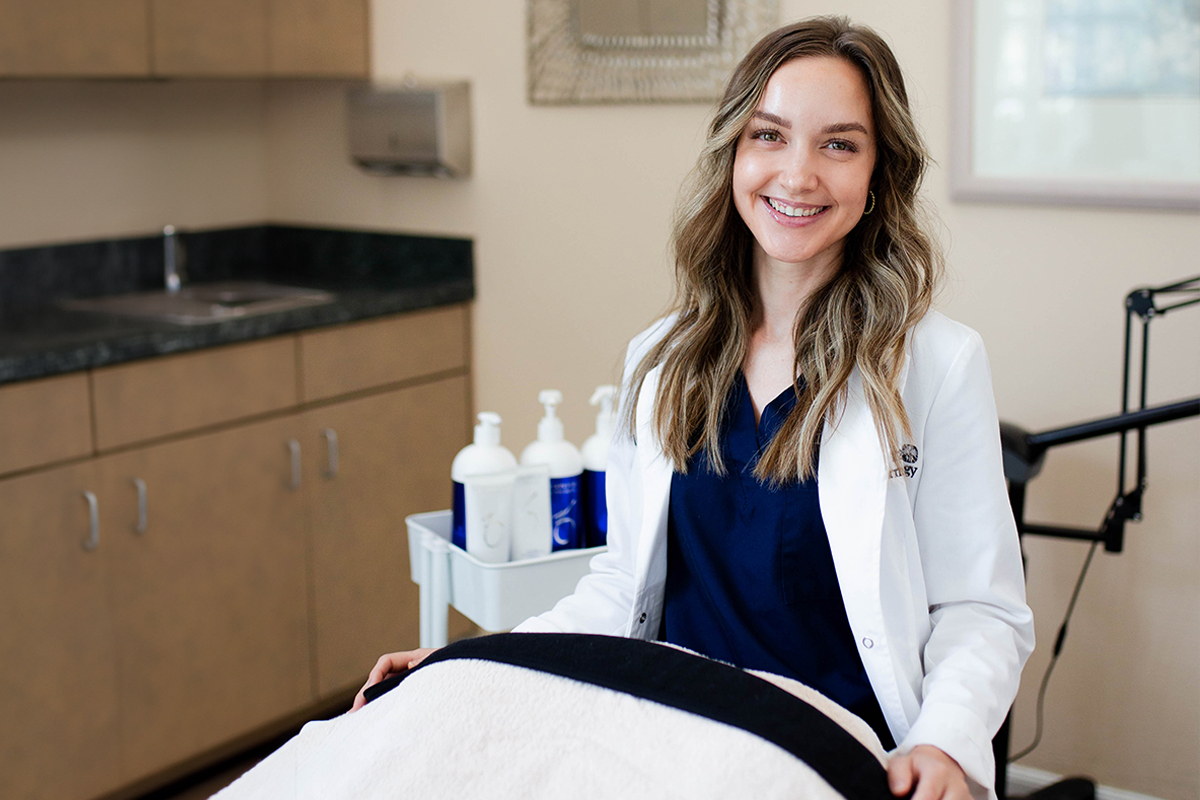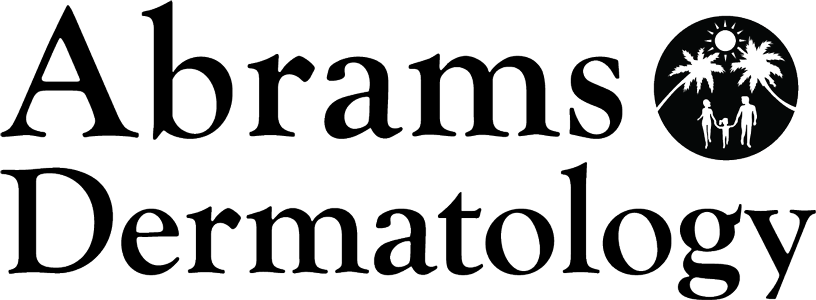Achieve smoother, brighter skin with dermaplaning at Abrams Dermatology. This gentle exfoliation treatment effectively removes dead skin cells and peach fuzz, helping to reduce the appearance of acne scars, fine lines, and uneven texture. Experience revitalized skin while enhancing product absorption for a glowing complexion.
Slough Away Dead Skin and Peach Fuzz
Dermaplaning is a non-invasive exfoliation treatment that uses a specialized surgical scalpel to gently remove dead skin cells and fine vellus hair, commonly known as peach fuzz. This process enhances the skin’s texture and promotes a more radiant complexion. By eliminating the outer layer of dead skin, dermaplaning allows for better absorption of skincare products and improves the effectiveness of subsequent treatments. This procedure helps to minimize the appearance of acne scars, fine lines, and uneven skin tone, revealing a smoother surface.

Dermaplaning is the Ideal Treatment For:
- Acne scars
- Fine lines and wrinkles
- Uneven skin texture
- Peach fuzz (vellus hair)
- Dull complexion
- Enlarged pores
- Dry, flaky skin
The Unique Benefits of Dermaplaning:
- Provides immediate results with smoother, brighter skin
- Enhances the effectiveness of skincare products
- Promotes cell turnover and rejuvenation
- Safe for most skin types and conditions
- Non-invasive with minimal downtime
- Improves makeup application and longevity
- Reduces the occurrence of clogged pores
- Offers a relaxing and pampering experience
Dermaplaning FAQs
What Happens During the Treatment?
During a dermaplaning session, a trained aesthetic practitioner will start by cleansing your skin to remove any makeup and impurities. After preparing your skin, they will use a sterile surgical scalpel to gently glide over your face, removing dead skin cells and fine vellus hair. The process usually takes 30 to 45 minutes and is generally painless.
Are There Any Side Effects?
While dermaplaning is considered safe for most skin types, some individuals may experience temporary redness, sensitivity, or mild irritation immediately after the treatment. These effects typically subside within a few hours. However, dermaplaning may not be suitable for individuals with active acne, rosacea, or other skin conditions.
Is There Any Downtime or Aftercare Required?
Dermaplaning requires no downtime. You may resume your daily activities immediately after the treatment. However, your skin will be more sensitive post-treatment, so it’s essential to avoid sun exposure, harsh skincare products, and vigorous exercise for at least 24 hours. Applying a gentle moisturizer and sunscreen is highly recommended to protect your skin.
When Will I See the Results?
You will notice immediate results after your dermaplaning session. Your skin will feel smoother and look brighter right away. The enhanced absorption of your skincare products may also lead to further improvements over the following days as your skin continues to rejuvenate.
How Often Should I Have Dermaplaning Sessions?
For optimal results, it’s typically recommended to schedule dermaplaning sessions every 4 to 6 weeks. This allows your skin to regenerate while maintaining its smooth texture. However, your skincare professional may suggest a schedule based on your skin type and needs.

Schedule Your Consultation
Abrams Dermatology is dedicated to helping you achieve a revitalized complexion through dermaplaning in Sarasota. This effective treatment gently exfoliates the skin, removing dead cells and fine hair to reveal a smoother, brighter appearance. Ideal for enhancing skincare absorption and reducing the visibility of fine lines and acne scars, dermaplaning is a safe and non-invasive option for all skin types. Contact us today to schedule a consultation and take the first step toward radiant skin.